
Revisited
This blog started off as something else, and sort of got hi-jacked along the way. Let me explain.
Since my earliest visit to the Greenbrier Valley area, in Christmas-time 1964, I had heard about The Legend of John Henry and the Big Bend Tunnel. And, for many years, as a proud citizen of the state of West Virginia, I had talked about how important it was that we remember there was a real story behind the Legend, and the song.

And, of late, the State Government has taken up this task, what with a brochure, money for a new park, and even a forthcoming exhibit sponsored by the West Virginia Humanities Council.
But, then things began to change. A year or so ago, at a WV Humanities Council lecture on John Henry, I heard a comment by one of the lo cal "experts" on the subject of John Henry. This individual said that there was some new ground-breaking work being done by a professor at William and Mary that would change many ideas we all had about John Henry.
cal "experts" on the subject of John Henry. This individual said that there was some new ground-breaking work being done by a professor at William and Mary that would change many ideas we all had about John Henry.
 cal "experts" on the subject of John Henry. This individual said that there was some new ground-breaking work being done by a professor at William and Mary that would change many ideas we all had about John Henry.
cal "experts" on the subject of John Henry. This individual said that there was some new ground-breaking work being done by a professor at William and Mary that would change many ideas we all had about John Henry.Last fall, at William and Mary's Homecoming, I got to hear that "professor," Scott Reynolds Nelson, describe his search for the real John Henry. After hearing his presentation, I knew I had to read his book "Steel Drivin' Man -- John Henry -- The Untold Story of an American Legend", but the W&M Bookstore was sold out. So, this spring for my birthday, I got it as a present from "older daughter." I read it eagerly.
And so, on a hot, August 1st, on my way back from the farm, I decided to stop by Talcott WV, "The Home of the John Henry Legend" and record a few pictures so as to make a glib blog about how reality hasn't caught up with scholarship.
For the blog, I planned on showing the statue (see above), a gift from the local Ruritan Club, the front cover of the brochure (see above), the Park sign (see right), and of course a picture or two of the actual Tunnel.
I arrived in Talcott, parked my car and walked beside the tracks towards the tunnel. I knew from my most recent trip on The Cardinal, that someone, CSX, the State, both(?) had put up fencing extending all the way from near where I had parked, down to the tunnel site. All the way down, I was not sure I would be able to get over to see the tunnel since the fencing was placed between the "old" right-of-way, now abandoned, and the "new" right-of-way, a very busy East-West line used by CSX on a regular basis.
I knew from an earlier visit, that the original tunnel, "the John Henry Tunnel" was actually called "The Great Bend Tunnel," while the new bore, built, I believe, in the 1930's is the "Big Bend Tunnel." I realized the path I was on was leading toward the new bore and not the old. Thankfully once I got down near the tunnel site, I saw that there was an open gate. I entered and took a shot of the twin bores. But as I took my shot, I noticed, ever so slightly, there appeared to be a small cloud settling down in front of the Great Bend Tunnel.
"Probably dust," I said to myself and then walked closer. But  the closer I got, the more I realized it wasn't dust. Rather, it was a mist, coming out of the bore of the Great Bend Tunnel. Intrigued, I moved forward. Unlike Scott Nelson, I was not about to enter the tunnel, I just wanted to peer in and see what was happening.
the closer I got, the more I realized it wasn't dust. Rather, it was a mist, coming out of the bore of the Great Bend Tunnel. Intrigued, I moved forward. Unlike Scott Nelson, I was not about to enter the tunnel, I just wanted to peer in and see what was happening.
 the closer I got, the more I realized it wasn't dust. Rather, it was a mist, coming out of the bore of the Great Bend Tunnel. Intrigued, I moved forward. Unlike Scott Nelson, I was not about to enter the tunnel, I just wanted to peer in and see what was happening.
the closer I got, the more I realized it wasn't dust. Rather, it was a mist, coming out of the bore of the Great Bend Tunnel. Intrigued, I moved forward. Unlike Scott Nelson, I was not about to enter the tunnel, I just wanted to peer in and see what was happening.And then I heard the water drops, hitting the leaves just outside the tunnel entrance.
"Drip, Drip, Drip, Drip."
And again I paused. And then moved forward again until I was standing right at the rocks "blocking" the entrance to the tunnel.
Looking in I could see the entire tunnel floor had a good 1-2 inches of water as far back as I could see, which because of the mist coming out was not very far. And I could feel the incredibly cool air, natural air conditioning perfect for a hot August Day, splashing against my face and body.
Rationally, I knew there was a reasonable, scientific answer for what was happening, and even began to formulate my speculations about the phenomena. Something about hot air/ cold air, tunnels with water, wet springs, and the like. I have hiked the tunnels of the North Bend Rail Trail. I have seen this many times. I know there is a rational answer for what was happening.
That was the science.
But there is more to life than science.
And so, gradually the feeling came over me that I was seeing and hearing the tunnel workers from the past. No, I was not feeling the presence of John Henry, for Scott Nelson has made a pretty convining case for John Henry being at the Lewis Tunnel about 20-30 miles east of here in Virginia. But still, I was in the presence of the tunnel workers from the past, coming out to greet me as a mist.
And the sound I was hearing? It was the sound of hammers tapping out the message,
"I, "Work," "For," "You."
A sound that reminded me that a lot of what we call "Modern Civilization" has been built on the lives of workers whom we now forget. Workers who sweated and swore; workers who got sick, and even, as we know in John Henry's case[ and many other cases], died. Workers who never received the  pay due them for what they did for all the rest of us.
pay due them for what they did for all the rest of us.
 pay due them for what they did for all the rest of us.
pay due them for what they did for all the rest of us.And that was when I realized the message of this blog had been taken over by The Tunnel itself. And instead of being a "smart" commentary on what happens when reality changes and people don't. This blog is now a reminder, as indeed the John Henry song is a reminder:
Don't forget our debt to those
who made us what we are.


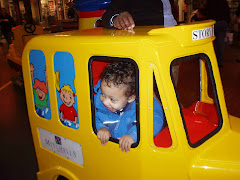
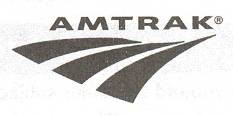
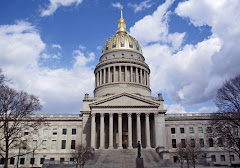
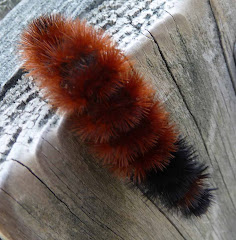
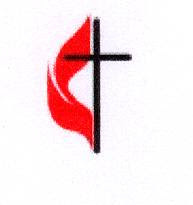
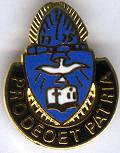

2 comments:
John Ahuia and Mommy went to a David Grover and the Big Bear Band concert on Saturday. David Grover used to tour with Arlo Guthrie and sings a number of "American Folk Songs". The opening song was the ballad of John Henry!
Well, John A. I hope you enjoyed the concert
Post a Comment